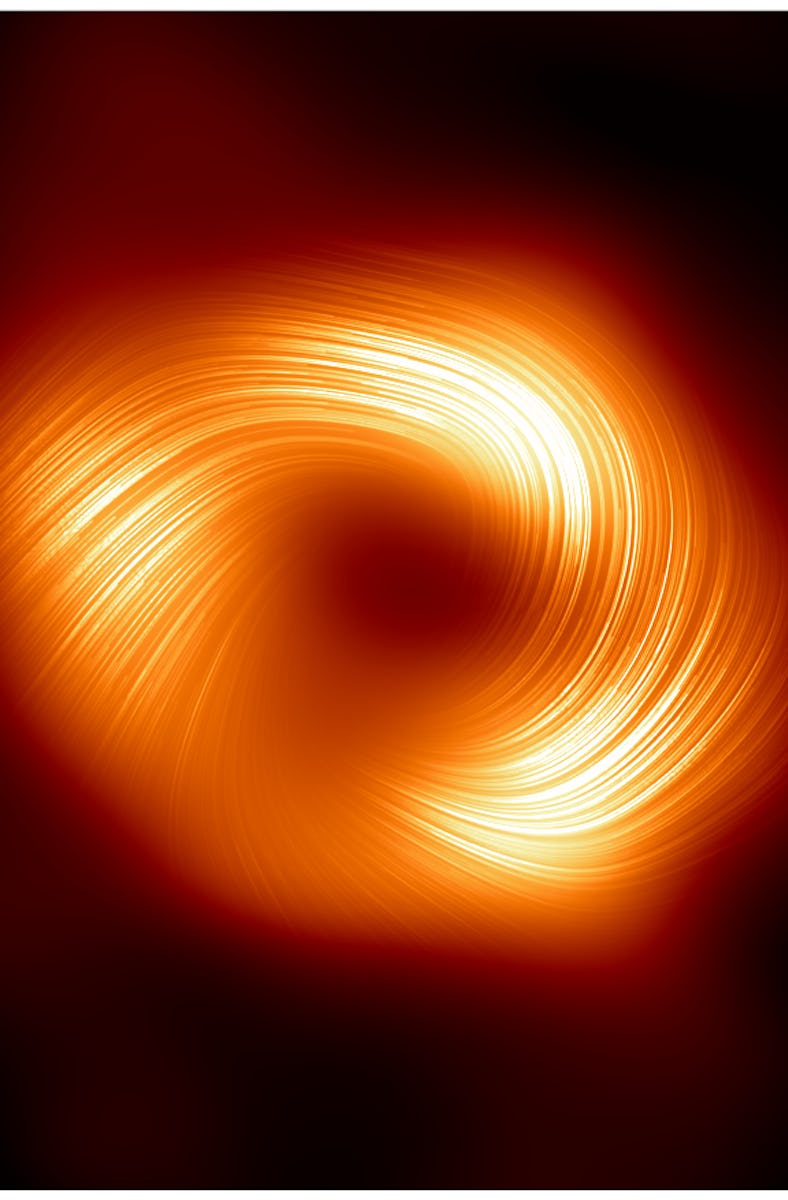Look! Our Galaxy’s Supermassive Black Hole Resembles A Cruller Donut In This New Image
This space donut is packed with science.

Astrophysicists got a fresh look at the supermassive black hole Sagittarius A* (Sgr A*) that lurks at the center of our galaxy. They viewed this cosmic monster for the first time in polarized light. This gives them a unique opportunity to study the chaos at the center of the Milky Way in better detail.
The stripes seen in the image represent the polarized light that exists just outside the black hole, according to a press release from the Event Horizon Telescope (EHT), which took the picture. The telescope also took the first-ever image of a black hole, which was released in 2019.
The Event Horizon Telescope (EHT) collaboration released their first polarized light image of the supermassive black hole at center of the Milky Way, called Sagittarius A*, on March 27, 2024.
Where does this polarization come from? When gas whips around the event horizon — the black hole’s point of no return (or, in other words, where objects get spaghettified) — molecules start bombarding each other. This creates charged particles that produce magnetic field lines that twist, influencing the region around the black hole in ways that scientists are still trying to understand. Astrophysicists think they play a role, for instance, in producing the jets that a fraction of black holes seem to fling out into space.
“Polarized light teaches us a lot more about the astrophysics, the properties of the gas, and mechanisms that take place as a black hole feeds,” Angelo Ricarte, project co-lead and Harvard Black Hole Initiative Fellow said in the statement.
A tale of two black holes
This is the second polarized light image of a black hole from EHT. The first was of M87*, a supermassive black hole that blasts out a massive jet from galaxy Messier 87 and which starred in EHT’s first-ever image of a black hole.
Now with polarized images for not one, but two black holes, astronomers are looking for similarities and differences between them.
The supermassive black hole Sagitarrius A* lurks at the Milky Way’s center, which is found close to the horizon in this image.
Sgr A* dwarfs in comparison to M87*. Our galaxy’s black hole, located a short 26,000 light-years away from Earth, is more than a thousand times smaller than M87*. Gas takes days or weeks to go once around M87*, whereas it can take just minutes to circle Sgr A*.
But they’re remarkably similar, the new polarized image reveals.
Their magnetic fields have similar structures, the polarized light data suggests. That’s critical knowledge to astrophysicists as it “suggests that the physical processes that govern how a black hole feeds and launches a jet might be universal among supermassive black holes,” Mariafelicia De Laurentis, EHT Deputy Project Scientist and professor at the University of Naples Federico II, Italy, said in Wednesday’s statement.
With these polarized images, astrophysicists now have a new tool to refine their theoretical models and simulations of some of the most extreme objects in the universe.